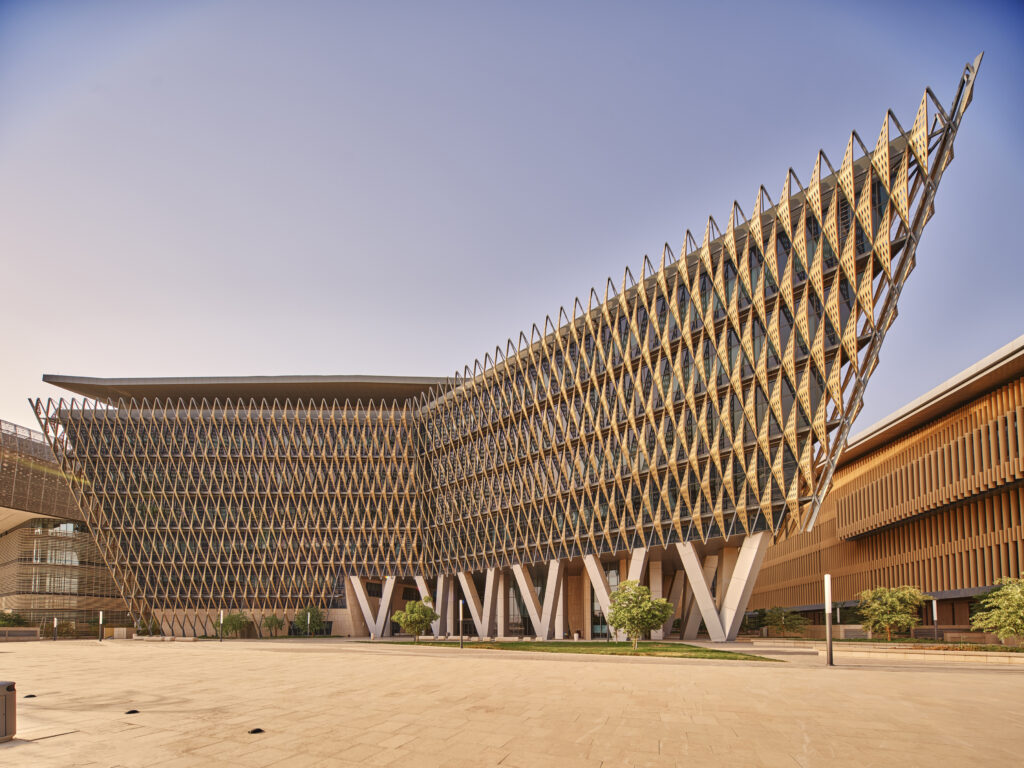Adam Mitchell and Marc Rogers featured in FX Magazine’s “Whatever the Weather”
FX Magazine - May/June 2025
Principals Adam Mitchell, AIA, LEED AP BD+C, and Marc Rogers, LEED AP BD+C, offer their expertise designing projects that combat the effects of climate change for “Whatever the Weather” in the May/June Issue of FX Magazine.
The article highlights “a mixture of high-tech innovation and traditional wisdom” that informs a variety of global projects designed to withstand extreme weather. Marc Rogers shares how details within CambridgeSeven’s design for the College of Life Sciences at Kuwait University are derived from traditional Arabian architecture. The two-building complex houses classrooms and lecture halls, and features time-honored elements such as mashrabiya and large atria that help students and staff contend with soaring temperatures, solar glare and dry air.
Adam Mitchell, Principal of Sustainability at CambridgeSeven, discusses issues such as flash flooding and rising sea levels found in temperate climates, and explains how these factors heavily impact the design of projects closer to home. He also highlights the importance of architects and design professionals in leading the charge to educate clients, peers and the wider public about the necessity of designs that promote resilience to increasing hazards, such as extreme weather.

The multi-award winning college, part of a new university outside of Kuwait City, was designed as a response to the harsh desert conditions experienced on the Arabian Peninsula. Heat, dry air and solar glare were managed through the use of mashrabiya, reimagined to provide protection against heat gain, and to redirect views from the building and allow the soft, even light from the north. The facades were tilted outward to self-shade the interior and allow users to occupy more of the floor plate, while two large atria act like heat chimneys, passively drawing cool air up through the building.